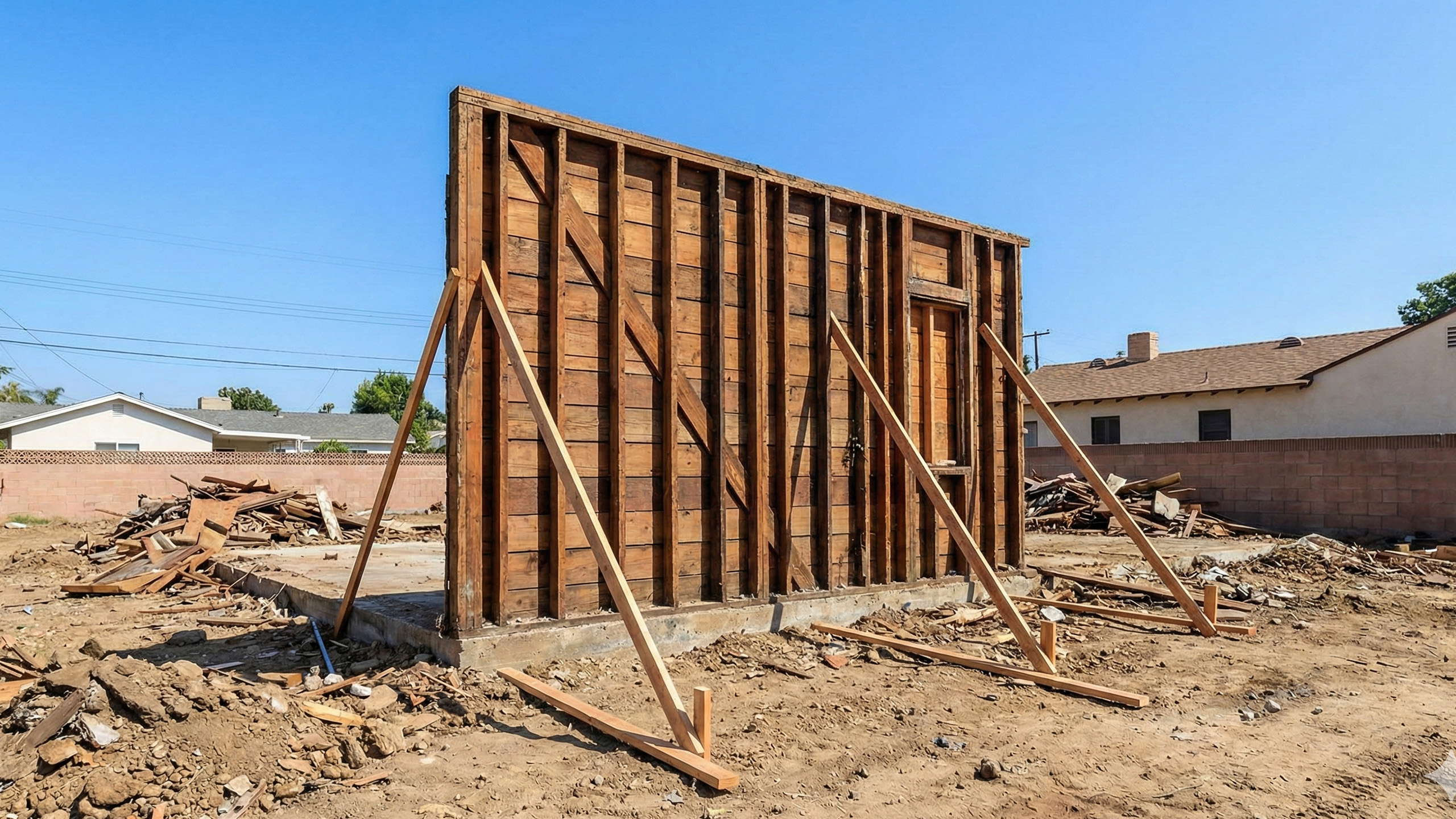When it comes to developing your single family-zoned Los Angeles property, there are a few options available to you. If you’re looking to use your property to generate income there are two stand-out options you should consider.
You can develop your lot as a Small Lot Subdivision, or through SB9, build up to 4 units on your single family lot. Let’s dig a little deeper into each option!
Both of these methods have their own benefits and drawbacks, so it's important to understand the difference before making a decision. In this blog post, we will discuss the benefits and drawbacks of each method and help you decide which is best for your investment goals.
Small Lot Subdivision
A Small Lot Subdivision in Los Angeles involves dividing a single-family property into multiple, fee simple lots that can each have their own dwelling unit. This is often preferred by developers looking to sell their properties when construction is complete for a large payout, possibly to cover development debt.
However, it can take years to go through the approval process with the city. The number of units you can build depends on the size of your lot and the configuration as parking and vehicular circulation typically play a crucial role in how your project is designed and how lots are divided.
This option has been around for a while, but it is more complicated and time-consuming than SB9. Let’s take a look at SB9 below.
SB9
State Bill 9 was enacted to encourage the construction of new homes in California, increase residential density, and improve the city zoning options for multi-family housing. The intention is to provide more affordable housing for California residents, while limiting development under the bill to homeowners rather than developers. SB9 makes it easier and faster for property owners to develop their land.
Developing your property through the state of California’s SB9 program allows for an urban lot split and the creation of both main and accessory dwelling units (ADUs). It’s known as the “duplex bill”—but we believe it would be better termed a “fourplex bill!”
The owner must live in one of the units for a minimum of 3 years. This method is preferred if you have limited funds and plan on generating rental income. The permitting process for SB9 follows more of a standard single family timeline and is much faster than with a Small Lot Subdivision.
In this blog post, we will further compare the pros and cons of developing your property through SB9 vs. a small lot subdivision.
SB9
Pros:
- SB9 is a new law, it is faster and easier to develop your property through SB9 than through a Small Lot Subdivision
- SB9 is typically better for the environment as more of the existing building on site must remain intact
- Less expensive to develop as there are fewer entitlements and consultants required, and hence associated costs
Cons:
- SB9 is a new law, so there may be some kinks that need to be worked out as cities begin to apply the state law. Currently cities are required to abide by state law, but this can result in delays as the first projects are filed
- SB9 may not allow you to build as many units on your property as you would be allowed to build through a Small Lot Subdivision
- You will be required to live on the property for a minimum of 3 years. You can’t just build and sell
Small Lot Subdivision:
Pros:
- Small lot subdivisions have been around for a while, so the process is more refined and familiar to authorities than SB9
- Small lot subdivisions typically allow for more units per acre than SB9 does, though the number of units may be determined by parking and circulation
- If you’re looking to build and sell for a one-time payout this option is preferred
Cons:
- Small lot subdivisions can be more complicated and time consuming than SB9
- You may not be able to keep as much of the existing building(s) on site intact as you would with SB9
- More expensive due to additional entitlements and consultants required
- If you have tenants occupying the existing building(s) you may be required to provide affordable replacement housing or sell at below market rates
Both SB9 and small lot subdivisions have their pros and cons, so it can be difficult to decide which option is best for a particular property. Some of the factors that need to be considered include the cost of development, the time frame for development, and the level of flexibility that is offered by each option.
SB9 projects offer more flexibility when it comes to building design and placement on the property and may require less parking. Small lot subdivisions require easements for common vehicular circulation which limits where buildings can be located on site, especially for sites that are smaller and only allow for a single driveway.
The time frame for development can also vary significantly depending on the option that is chosen. Small Lot Subdivision projects typically take a lot longer to complete than SB9 projects because they require legal lot splits, more consultant work, additional hearings and approvals, and more. However, Small Lot Subdivisions offer more flexibility with respect to the sizes and configurations of the individual homes. SB9 developments are generally quicker to complete, but they are more restricted in terms of what can be built on the property.
Finally, when it comes to financial reasons, you will need to weigh your options with respect to long and short term financial goals. With a Small Lot Subdivision, you can sell the units separately for a higher price. However, with SB9 that is not possible as all units are still technically one property. That said, SB9 offers other financial benefits - It's easier to get financed and cheaper to develop a property through SB9. If your need or preference is a larger one-time payout, a Small Lot Subdivision may be your best bet as you can sell the units individually or all at one time and the homes command higher sale prices. This also gives you the flexibility to live in one and rent the others, or rent all units. SB9 is preferred if you are okay with living on the property for at least 3 years and plan to have steady rental income by leasing the other units on site.
How Letter Four can help California homeowners
The Letter Four Design-Build process is ideal for California homeowners who are looking to make changes to their property in response to the new zoning laws. This is because all aspects of project design and construction are managed by one team. With our proven “one-stop-shop” approach, projects are streamlined, with improved communication and reduced risks for homeowners.
Planning laws (especially those involving zoning changes) can sometimes be hard to interpret. If you’re new to the world of construction, it can be difficult to know where to start. Our expert team starts every project with a robust due diligence phase.
This involves meeting with clients to ascertain budget and goals –– so that any architectural plans presented are achievable given project goals and costs. We research city requirements (and much more!) at this early stage –– before moving on to conceptual designs and preliminary pricing. As the project progresses, we’ll also liaise with planning officials and design boards on your behalf.
With the Design-Build process working in harmony, you’ll know your plans are feasible not only for new zoning laws, but also timeframe and budget.
Reach out to us today to discuss whether taking advantage of SB9 or creating a Small Lot Subdivision is best for you!






.svg)























.png)